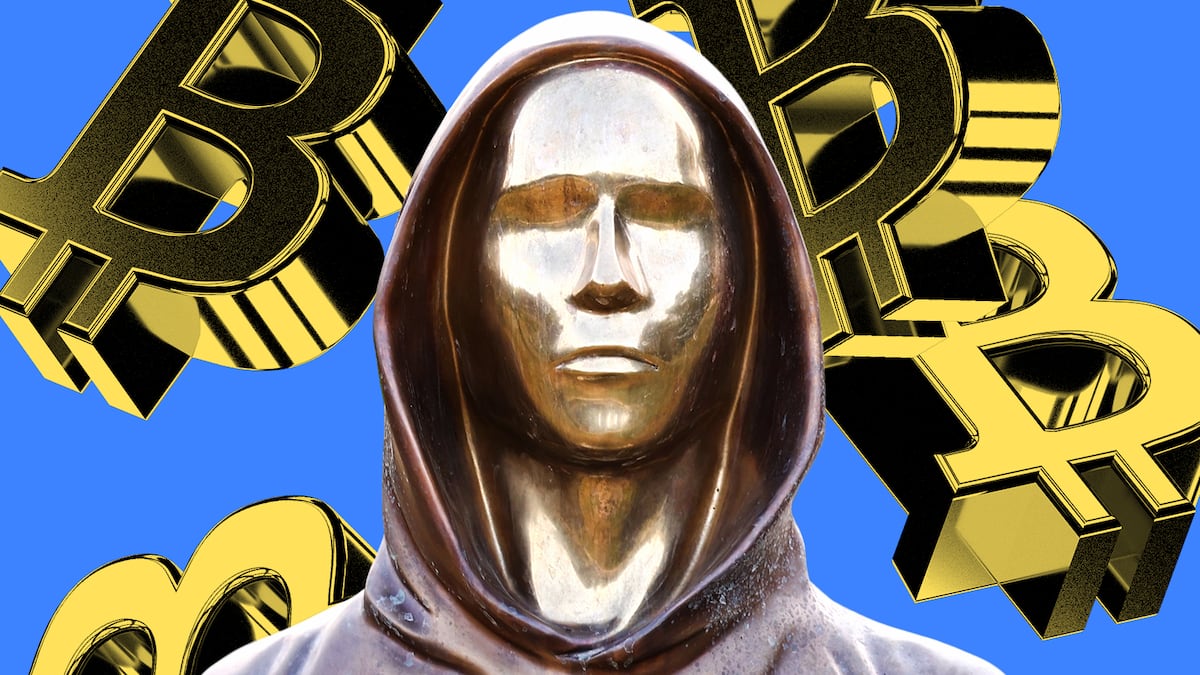- After 15 years the greatest mystery in financial history may finally be solved.
- Wallets connected to Satoshi have sprung back to life in recent days.
- HBO documentary rekindles speculation about Bitcoin's origins.
Capping days of mounting anticipation, a documentary aired Tuesday said Canadian software developer Peter Todd is Satoshi Nakamoto, the pseudonymous cypherpunk who created Bitcoin.
But the evidence filmmaker Cullen Hoback marshalled in “Money Electric: The Bitcoin Mystery” is unlikely to satisfy everyone who has long analysed the clues left by Nakamoto, who mysteriously vanished in 2011, three years after sharing the Bitcoin white paper on the P2P Foundation website.
Todd himself denied Hoback’s claim in the documentary, calling it “ludicrous,” and on X Tuesday evening.
Todd did not immediately reply to DL News’ request for comment Tuesday night.
Journalists and crypto sleuths have spent years trying to solve what may be the greatest mystery in modern finance: Who is Satoshi Nakamoto?
Usual suspects
Their efforts have turned up several names, and some have suggested Nakamoto was a group of people. The usual suspects — Nick Szabo and Adam Back, among them — have denied they are Satoshi.
One 2014 report said Satoshi Nakamoto was none other than a man by the same name living quietly, and openly, in Southern California. Speculation has also turned to X owner and multibillionaire Elon Musk.
Craig Wright, an Australian computer scientist tried — and failed — to prove he was Nakamoto in a lawsuit filed in the UK.
In the documentary, Hoback unearths a comment Todd made in a Bitcoin forum in December 2010, in which he replies to one of Nakamoto’s posts.
“Read it closely,” Hoback says in the film to one of his colleagues. “Is [Todd] responding, David? Or is He continuing a thought?”
Hoback posits Nakamoto and Todd are one and the same, and that Todd accidentally logged in using a recently-created account bearing his own name to finish the thought that he had shared an hour and a half earlier while using the Satoshi Nakamoto account.
The filmmaker also points to other hints that Todd might be Nakamoto, including the fact that Nakamoto posted more frequently during summers, “like they were on an academic calendar.” Todd was a university student in Bitcoin’s early days. Nakamoto stopped posting on the forum shortly after Todd joined, the film said.
“I’ll warn you, this is going to be very funny when you put this into the documentary and a bunch of Bitcoiners watch it,” Todd says in the film.
“I suspect a lot of them will be very happy if you go this route, because it’s gonna be yet another example of journalists really missing the point.”
Hoback asks Todd to elaborate.
“The point is to make Bitcoin the global currency,” Todd says, adding that Hoback and others trying to unmask Nakamoto were “distracted by nonsense.”
$67 billion stash
But the question of Nakamoto’s identity is more than idle speculation.
Bitcoin, introduced 15 years ago, is the original cryptocurrency and the anchor of the crypto economy, now worth $2.3 trillion.
Central banks are studying blockchain technology, Wall Street giants are offering Bitcoin funds, and the two candidates for US president in the November 5 election have referenced crypto on the campaign trail.
Nakamoto is estimated to control 1.1 million Bitcoins, worth about $67 billion at Tuesday’s prices.
If Nakamoto has access to that mass of Bitcoins, it would mean the creator could one day attempt to sell them, an event that would likely have a dramatic impact on the token’s price.
Ahead of its initial public offering in 2021, for instance, Coinbase said the identification of Nakamoto or the transfer of their Bitcoins was a factor that would adversely affect its business.
The cryptographers club
Nakamoto spoke openly and often in a who’s who email group of mathematicians and cryptographers referred to as the cypherpunk mailing list.
Members included Julian Assange, the founder of WikiLeaks; Ross Ulbricht, the founder of dark web marketplace Silk Road; and Vitalik Buterin, the co-founder of Ethereum.
Nakamoto’s communication on the mailing list abruptly stopped in December 2010. His last known email was sent in April 2011.
Ahead of the documentary’s debut, bettors on Polymarket’s pool about Satoshi’s identity wagered $20 million on various candidates.
Once the frontrunner on Polymarket, late American cryptographer Len Sassaman fell out of bettors’ favour Monday after Hoback told CNN he confronts Nakamoto in the documentary.
And Sassaman’s widow, Meredith Patterson, told DL News that HBO never approached her when making the documentary.
Bettors then turned their attention to American polymath and computer scientist Nick Szabo. Yet by late afternoon New York time his odds had also fallen. Suddenly Adam Back, the CEO of Blockstream, was the frontrunner among named candidates, though most were betting Hoback would identify multiple creators, or someone not among the 15 named candidates.
Szabo has repeatedly said he isn’t Satoshi.
But he was a member of the cypherpunk mailing list, and is known to have worked on something he called Bit Gold before Nakamoto published the Bitcoin white paper.
13 candidates
In addition, a controversial 2014 study by the Aston University Centre for Forensic Linguistics analysed the writing style of 13 popular Nakamoto candidates and said Szabo’s was closest to that of the author of the Bitcoin white paper.
The Bitcoin white paper references Back’s Hashcash protocol and Wei Dai’s B-Money. Back and Dai are both members of the cypherpunk mailing list.
Another longtime candidate was the late software developer Hal Finney.
Finney was the first to reply to the Bitcoin white paper, the first person to download the software, and the second miner after Satoshi to verify transactions.
In 2009, Finney was diagnosed with ALS, an incurable motor neuron disease.
Some have speculated that Finney’s declining health explains Satoshi’s disappearance from the web in 2011.
Finney denied he was Satoshi in an interview with Forbes shortly before his death in 2014.
Old wallets
Adding to the intrigue, over a dozen early Bitcoin wallets have sprung back to life over the past week.
In recent months, these wallets, among the first active on the network between 2009 and 2010, have moved a combined $35 million to new addresses and crypto exchanges.
Normally, such movements wouldn’t draw significant attention. It’s not uncommon for old wallets to move Bitcoin around occasionally.
But the increased frequency of wallet movements, coupled with the announcement of a documentary focusing on Nakamoto’s identity, added a fresh layer of intrigue.
One user on X asked Todd about his becoming an overnight sensation.
“I’ve done a lot of things in life that have put me in the spotlight. Not my first rodeo,” Todd replied. “But this might be crazier than before. We will see!
Update, October 8: This story has been updated to include additional details from the documentary.
Aleks Gilbert is DL News’ New York-based DeFi correspondent. You can reach him at aleks@dlnews.com.


